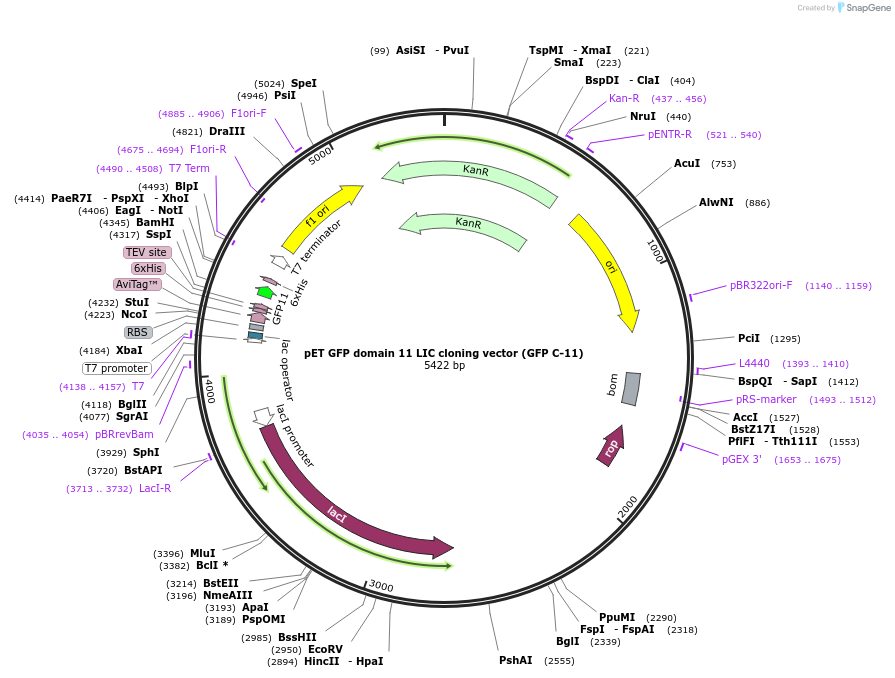-
Purpose(Empty Backbone)
-
Depositing Lab
-
Sequence Information
Ordering
| Item | Catalog # | Description | Quantity | Price (USD) | |
|---|---|---|---|---|---|
| Plasmid | 30183 | Standard format: Plasmid sent in bacteria as agar stab | 1 | $89 | |
Backbone
-
Vector backbonepET
- Backbone size (bp) 5422
-
Vector typeBacterial Expression
-
Tags
/ Fusion Proteins
- GFP domain 11 (C terminal on backbone)
- AviTag (biotin) (N terminal on backbone)
- 6xHis (N terminal on backbone)
- TEV cleavage site (N terminal on backbone)
Growth in Bacteria
-
Bacterial Resistance(s)Kanamycin, 50 μg/mL
-
Growth Temperature37°C
-
Growth Strain(s)DH5alpha
-
Copy numberLow Copy
Terms and Licenses
-
Academic/Nonprofit Terms
-
Industry Terms
- Not Available to Industry
Trademarks:
- Zeocin® is an InvivoGen trademark.
Depositor Comments
This plasmid is an empty vector. Your gene can be inserted with a LIC cloning protocol.
This vector adds a short GFP domain 11 tag to the C-terminus of your protein. After expression and purification, your protein can be mixed with a "biosensor" molecule (GFP domains 1-10), and fluorescence will develop. This technique can be useful if directly fusing the entire GFP molecule interferes with the function of your protein.
To clone into this vector, add LIC tags to the 5' end of your PCR primers.
Forward - 5' TACTTCCAATCCAATGCA3'
Reverse - 5' CTCCCACTACCAATGCC 3'
Do NOT include a stop codon with your reverse primer.
Linearize the plasmid with SspI, then gel purify.
When digesting the DNA with T4 polymerase, use dCTP for the insert and dGTP for your linearized vector.
More information on this vector can be found through http://qb3.berkeley.edu/qb3/macrolab/
These plasmids were created by your colleagues. Please acknowledge the Principal Investigator, cite the article in which the plasmids were described, and include Addgene in the Materials and Methods of your future publications.
-
For your Materials & Methods section:
pET GFP domain 11 LIC cloning vector (GFP C-11) was a gift from Scott Gradia (Addgene plasmid # 30183 ; http://n2t.net/addgene:30183 ; RRID:Addgene_30183)



